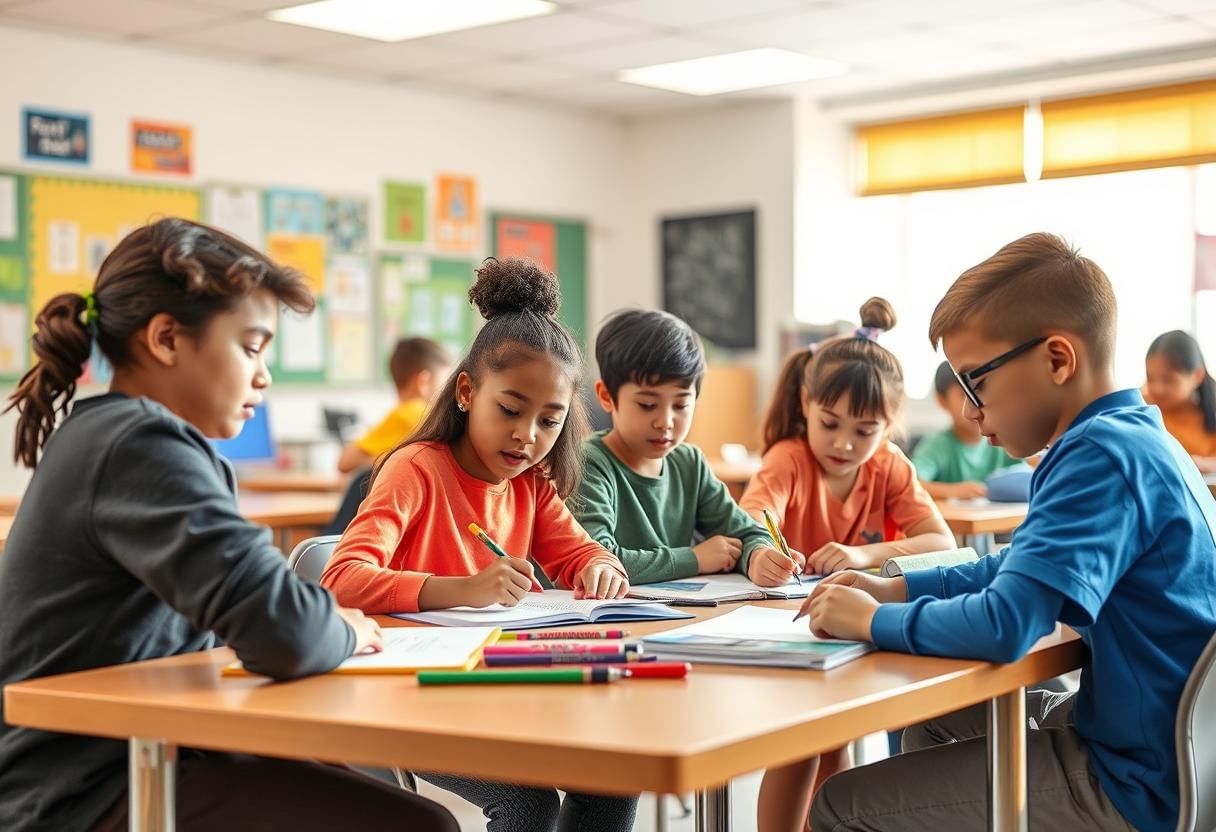B.Ed Entrance Exam > B.Ed Entrance Notes > Teaching Aptitude for Teaching Exam > Notes: Causes of Individual Differences
Notes: Causes of Individual Differences | Teaching Aptitude for Teaching Exam - B.Ed Entrance PDF Download
Introduction
 Genetic Traits Variation
Genetic Traits Variation
Individual differences are brought about by various factors. The significant causes of individual differences are:
Heredity
- Heredity is one of the most important causes of individual differences. An individual inherits certain traits from his/her parents which cause variations between individuals. For example, an individual’s height, build, hair colour, face shape etc. are largely determined by his hereditary qualities. Heredity and environment
- Intellectual differences among individuals are also determined by hereditary qualities. Some individuals are born with higher intellectual abilities than others. Heredity also determines the potential of an individual. For example, some individuals have the potential to become great musicians, artists, writers, etc.
Environment
- Environment plays a significant role in shaping individual differences. An individual’s environment includes all the experiences and stimuli that he/she encounters from the time of conception to death.
Some of the factors that constitute an individual’s environment are:- Physical factors such as climate, geography, etc.
- Intellectual factors such as education, exposure to information, etc.
- Social factors such as family, friends, community, etc.
- Moral factors such as values, beliefs, etc.
- Political factors such as government, laws, etc.
- Economic factors such as income, occupation, etc.
- Cultural factors such as traditions, customs, etc.
- Environment shapes the personality, behaviour, and abilities of an individual. For example, a child brought up in a musical environment is more likely to develop musical abilities than a child brought up in a non-musical environment. Similarly, a child brought up in a family that values education is more likely to excel in academics than a child brought up in a family that does not value education.
- Both heredity and environment work together to shape the personality and abilities of an individual. For example, an individual may have the hereditary potential to become a great athlete, but if he/she is brought up in an environment that does not promote physical activities, he/she may not be able to realise that potential.
Influence of caste, race and nation
- People from different castes and races often display notable differences. For example, it is commonly observed that a Kshatriya's son may show more courage, while a trader's child may exhibit business traits.
- Moreover, individuals from different nations display variations in personality, character, and mental abilities, influenced by their geographical and cultural contexts. Research indicates differences among Americans, African Americans, Chinese, Japanese, English, and Indian individuals.
Sex differences
- Boys and girls develop differently due to their sex. Generally, girls undergo physical development one or two years earlier than boys. Between ages 11 and 14, girls are usually taller and heavier, but after 15, boys tend to surpass them.
- Girls are often seen as kind, affectionate, and tender, while boys are typically viewed as brave, assertive, and competent.
Age
- Age is another factor leading to individual differences. As people age, they generally improve their learning abilities and emotional control. Maturity and development occur together as a child grows up.
Economic condition and education
- Differences among individuals can arise from their parents' economic status and their own education. Children from different economic backgrounds are unlikely to have similar experiences or opportunities.
Temperament and emotional stability
- Individuals differ in temperament; some are quick and energetic, while others are slow and calm. A person's emotional stability is affected by various physical, mental, and environmental factors, leading to individual differences.
Other Causes
- Personal interests, aptitudes, achievements, feelings, character, and backgrounds also contribute to individual differences.
Accommodating Individual Differences in Schools and Classrooms
 Individualized Learning Strategies
Individualized Learning Strategies
Providing suitable learning experiences for every student based on their unique needs can be challenging. However, the following tips can assist teachers in this effort.
Proper knowledge of the Individual’s Potentialities
- The first step in making provisions for the individual differences is to know about the abilities, capacities, interests, aptitudes and other personality traits of the individual pupils.
- For this purpose, help from intelligence test, cumulative record card, interest inventories, attitude scales, aptitude tests and measures for assessing personality traits should be taken.
Ability Grouping
- In the light of the results derived from various tests of knowing individual differences in terms of individual potentialities in various dimensions, the students in a class or area of activity can be divides into homogeneous groups.
- Such division can prove beneficial in adjusting the method of instruction to varying individual differences.
Adjusting the curriculum
- To meet the requirement of varying individual differences among the pupils, curriculum should be as flexible and differentiated as possible.
- It should have the provision for a number of diversified courses and co-curricular experiences so that the pupils may get opportunity to study and work in the areas of their own interests and abilities.
- It should provide adjustment to suit the local requirements and potentialities of students of different groups.
Adjusting the methods of teaching
- To make provision for the varying individual differences, adjustment with regard to the adaptation of methods of teaching is also most essential.
- Every teacher should be somewhat free to formulate his own plan and strategy and adapt instructional procedure which he finds most suited to the particular types of pupils under him.
- He should try to follow a different procedure or method of instruction suiting the requirements of varying ability groups of his pupils.
Adopting special programmes or methods for individualizing instruction
- Schools can implement specific programmes or instructional methods, such as the Dalton Plan, the Winnetka Plan, or the Project Method, as well as use programmed learning materials to allow students to learn at their own pace.
Other measures of individualizing instruction
- For the purpose of individualizing instruction a few practical measures can also prove beneficial.
- The student strength of the class or section should be made as small as possible.
- The teacher should try to pay individual attention to the group under instruction.
- The teacher should keep in view the individual difference of his students while engaging them in drill or practice work in the class-room or assigning home-task.
- In case where ability grouping is not possible and more specifically under the prevalent system of class teaching, special coaching and guidance programme for both the dull and the gifted children are most helpful.
Thus, the problem of individual differences can be tackled with multi-dimensional tasks. The teacher, school authorities, the parents and the Government as well as voluntary agencies –all should join hands to meet the individual requirements of children who possess tremendous individual differences.
The document Notes: Causes of Individual Differences | Teaching Aptitude for Teaching Exam - B.Ed Entrance is a part of the B.Ed Entrance Course Teaching Aptitude for Teaching Exam.
All you need of B.Ed Entrance at this link: B.Ed Entrance
|
27 videos|45 docs|11 tests
|
FAQs on Notes: Causes of Individual Differences - Teaching Aptitude for Teaching Exam - B.Ed Entrance
| 1. What are the primary causes of individual differences? |  |
Ans. Individual differences arise from a combination of genetic, environmental, and social factors. Genetics play a significant role in determining traits such as intelligence, personality, and physical appearance. Environmental influences, including upbringing, education, and cultural background, also shape individual behaviors and preferences. Additionally, social factors like peer influence and societal expectations contribute to variations among individuals.
| 2. How do genetics influence individual differences? |  |
Ans. Genetics influence individual differences by determining certain inherited traits, such as temperament, cognitive abilities, and predisposition to various health conditions. Studies in behavioral genetics suggest that many psychological traits have a heritable component, meaning that they can be passed down from parents to offspring. However, the expression of these genetic traits can be modified by environmental factors, leading to a unique combination in each individual.
| 3. In what ways do environmental factors contribute to individual differences? |  |
Ans. Environmental factors contribute to individual differences through experiences, culture, education, and social interactions. For example, a child's upbringing in a nurturing home may foster confidence and social skills, while another child in a more stressful environment may develop anxiety or social withdrawal. Educational opportunities and experiences also shape cognitive abilities, interests, and career choices, leading to significant differences among individuals.
| 4. Can individual differences change over time? |  |
Ans. Yes, individual differences can change over time due to various factors such as life experiences, personal growth, education, and changes in social circumstances. For instance, an individual may develop new skills or interests through education and social interactions, which can alter their personality traits and cognitive abilities. Additionally, major life events, such as marriage or career changes, can also impact individual differences.
| 5. How do social interactions affect individual differences? |  |
Ans. Social interactions affect individual differences by shaping behaviors, beliefs, and attitudes. Through interactions with family, peers, and society, individuals learn norms, values, and skills that influence their identity and personality. Peer pressure can lead individuals to adopt certain behaviors, while supportive relationships can enhance self-esteem and resilience. Thus, social experiences play a critical role in developing and modifying individual differences.
Related Searches





















